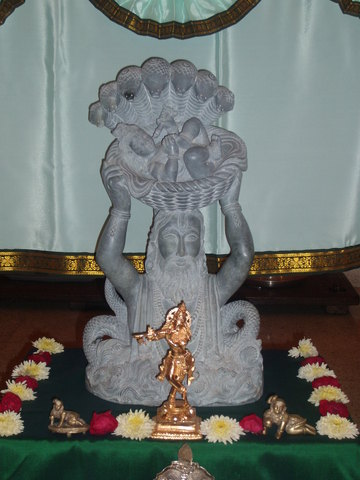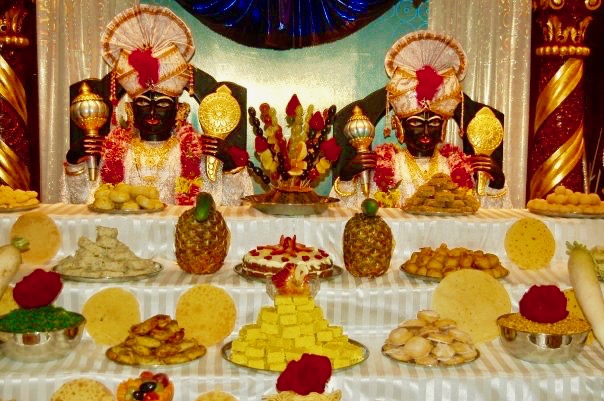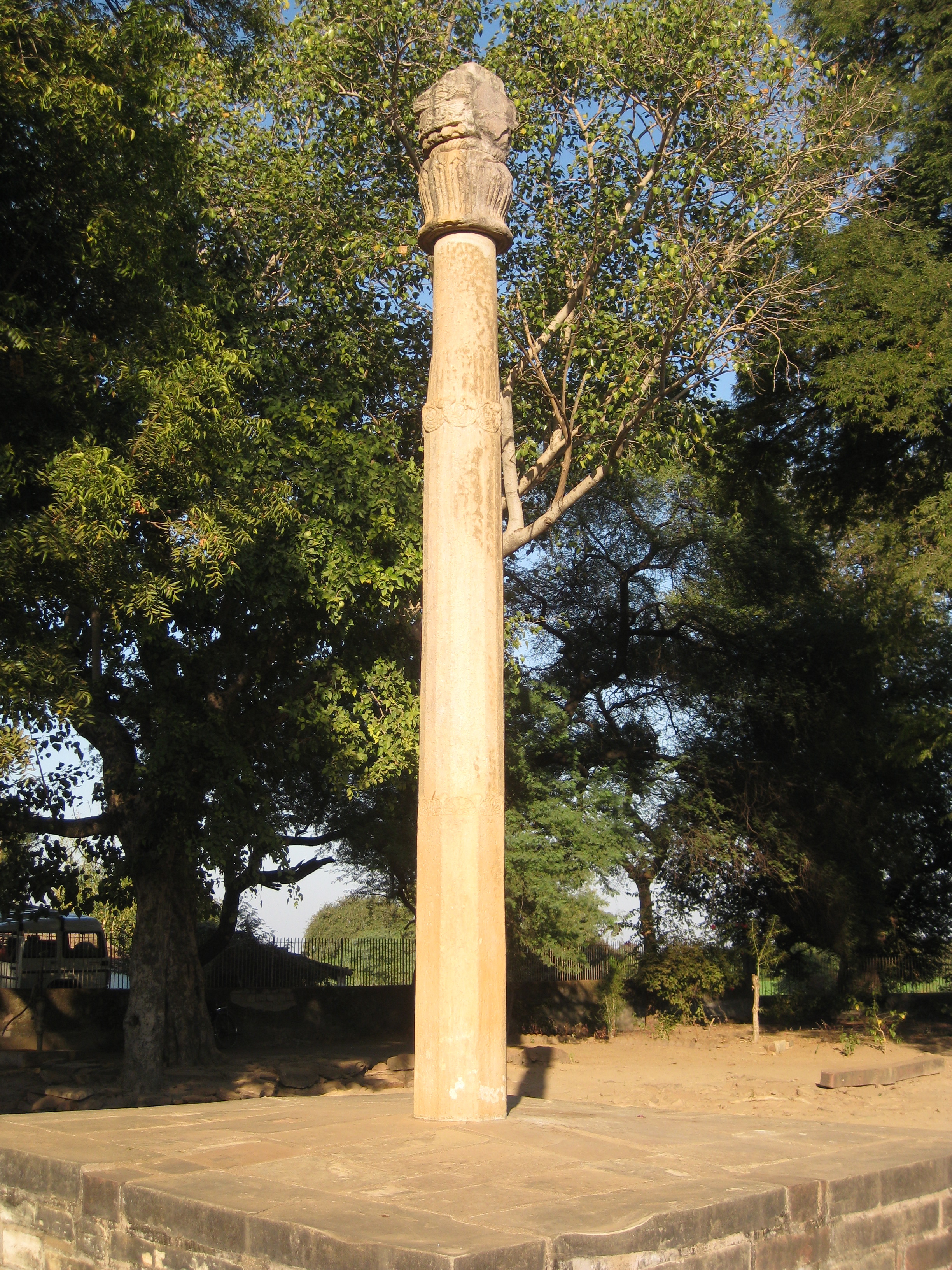|
Gopalila
Gopalila ( or, ଗୋପଲୀଳା) also called as Krishnalila is a traditional form of itinerant glove - puppet theatre of Odisha state. The art of Gopalila is mainly concentrated in the coastal district includes, Cuttack, Puri, Kendrapara, Ganjam and Dhenkanal. ''Gopa'' refers to the "cowherd boys" in associated with the life of lord Krishna and ''Lila'' means "play". The puppeteers are Gopals belongs to the caste of cowherds. In religious occasions, especially Janmastami and Govardhan Puja, the puppeteers performed to entertain local villagers. Puppets are made of wood and paper and their bodies are padded with cloth. The lower half being covered with a long skirt. In southern Odisha, the puppets have legs which touch the ground; but in the north Odisha, the puppets are without legs. Puppeteers usually travel in pairs from village to village carrying their basket of puppets with a small box like stage, large enough to mask the performer while he manipulates the puppets above ... [...More Info...] [...Related Items...] OR: [Wikipedia] [Google] [Baidu] |
Gopal (caste)
Gopal or Gauda is an Indian caste, which is a synonym of Ahir from Odisha State in East India. Their traditional occupation include dairy farming, cattle herding, cultivation and carrying palanquins of deities. They also worked as Paikas (soldiers) under the kings. They claim Kshatriya status and in hierarchy, they occupy the rank next to Khandayats. They also owned Zamindaris in Ranapura, Nayagarh and Khandapara regions of Odisha. They find mention in Mahabharata as soldiers of Narayani Sena. As per the census of India, they are the second largest caste in Odisha and comprise more than 16% of population. as well. Etymology The word Gopal derived from vedic "Gopala", which "''Go''" refers to cow and "''Pala''" refers to protector or herder. Hence "Gopala" literally means "cow herder" According to Bhagavata Purana, the earth takes the form of a cow and asks Vishnu to protect her. That was why Vishnu (Krishna), her guardian is called Go-Pala, protector of mother earth in the f ... [...More Info...] [...Related Items...] OR: [Wikipedia] [Google] [Baidu] |
Odisha
Odisha (English: , ), formerly Orissa ( the official name until 2011), is an Indian state located in Eastern India. It is the 8th largest state by area, and the 11th largest by population. The state has the third largest population of Scheduled Tribes in India. It neighbours the states of Jharkhand and West Bengal to the north, Chhattisgarh to the west, and Andhra Pradesh to the south. Odisha has a coastline of along the Bay of Bengal in Indian Ocean. The region is also known as Utkala and is also mentioned in India's national anthem, " Jana Gana Mana". The language of Odisha is Odia, which is one of the Classical Languages of India. The ancient kingdom of Kalinga, which was invaded by the Mauryan Emperor Ashoka (which was again won back from them by King Kharavela) in 261 BCE resulting in the Kalinga War, coincides with the borders of modern-day Odisha. The modern boundaries of Odisha were demarcated by the British Indian government when Orissa Province was es ... [...More Info...] [...Related Items...] OR: [Wikipedia] [Google] [Baidu] |
Kendrapara District
Kendrapara District is an administrative district of Odisha state in eastern India. The town of Kendrapara is the district headquarters. Kendrapara District is situated in the eastern portion of the state, and is bounded on the north by Bhadrak district, on the east by the Bay of Bengal, on the south by Jagatsinghpur District, on the west by Cuttack District on the northwest by Jajpur District. Geography Kendrapara District lies in 20° 20’ N To 20° 37’ N Latitude and 86° 14’ E To 87° 01’ E Longitude and situated in central coastal plain zone of the Odisha. The Bay of Bengal lies in the eastern part of the district. The coastline covers 48 km stretching from Dhamra Muhan to Batighar. Kendrapara district headquarters is 55 km from Cuttack. Kendrapara District lies in the river delta formed by the Brahmani and Baitarani and branch rivers of Mahanadi. The Bhitarkanika Mangroves, Bhitarkanika National Park, Gahirmatha Beach and Baladevjew Temple lie in t ... [...More Info...] [...Related Items...] OR: [Wikipedia] [Google] [Baidu] |
Dhenkanal District
Dhenkanal district is one of the 30 districts of the state of Odisha in Eastern India. Geography Dhenkanal district is one of the centrally located districts in Odisha. It lies between Longitude: 85° 58' to 86° 2' East and Latitude: 20° 29' to 21° 11' North. The nearest airport is Biju Patnaik Airport located at a distance of 52.12 Km. It is bordered by Kendujhar and Angul districts to the north, Jajpur district to the east, Cuttack district to the south and Angul district to the west. The district comprises mainly plains, however there are several discontinuous hill ranges in the district and along its southern border. The Brahmani River is the main river of the district. Demographics According to the 2011 census Dhenkanal district has a population of 1,192,811, roughly equal to the nation of Timor-Leste or the US state of Rhode Island. This gives it a ranking of 400th in India (out of a total of 640). The district has a population density of . Its popula ... [...More Info...] [...Related Items...] OR: [Wikipedia] [Google] [Baidu] |
Lord Krishna
Krishna (; sa, कृष्ण ) is a major deity in Hinduism. He is worshipped as the eighth avatar of Vishnu and also as the Supreme god in his own right. He is the god of protection, compassion, tenderness, and love; and is one of the most popular and widely revered among Indian divinities. Krishna's birthday is celebrated every year by Hindus on Krishna Janmashtami according to the lunisolar Hindu calendar, which falls in late August or early September of the Gregorian calendar. The anecdotes and narratives of Krishna's life are generally titled as ''Krishna Leela''. He is a central character in the ''Mahabharata'', the ''Bhagavata Purana'', the ''Brahma Vaivarta Purana,'' and the ''Bhagavad Gita'', and is mentioned in many Hindu philosophy, Hindu philosophical, Hindu theology, theological, and Hindu mythology, mythological texts. They portray him in various perspectives: as a god-child, a prankster, a model lover, a divine hero, and the universal supreme bein ... [...More Info...] [...Related Items...] OR: [Wikipedia] [Google] [Baidu] |
Janmastami
Krishna Janmashtami , also known simply as Krishnashtami, Janmashtami, or Gokulashtami, is an annual Hindu festival that celebrates the birth of Krishna, the eighth avatar of Vishnu. According to the Hindu lunisolar calendar, it is observed on the eighth tithi (Ashtami) of the Krishna Paksha (dark fortnight) of Shraavana Masa (according to the amanta tradition) or Bhadrapada Masa (according to the purnimanta tradition). This overlaps with August or September of the Gregorian calendar. It is an important festival, particularly in the Vaishnavism tradition of Hinduism. Dance-drama enactments of the life of Krishna according to the ''Bhagavata Purana'' (such as Rasa Lila or Krishna Lila), devotional singing through the midnight when Krishna was born, fasting (''upavasa''), a night vigil (Ratri ''Jagaran''), and a festival (Mahotsav) on the following day are a part of the Janmashtami celebrations. It is celebrated particularly in Mathura and Vrindavan, along with major Va ... [...More Info...] [...Related Items...] OR: [Wikipedia] [Google] [Baidu] |
Govardhan Puja
Govardhan Puja (), also known as Annakut or Annakoot (meaning a “mountain of food”), is a Hindu festival in which devotees worship Govardhan Hill and prepare and offer a large variety of vegetarian food to Krishna as a mark of gratitude. For Vaishnavas, this day commemorates the incident in the '' Bhagavata Purana'' when Krishna lifted Govardhan Hill to provide the villagers of Vrindavan shelter from torrential rains. The incident is seen to represent how God will protect all devotees who take singular refuge in him. Devotees offer a mountain of food, metaphorically representing the Govardhan Hill, to God as a ritual remembrance and to renew their faith in taking refuge in God. The festival is observed by most of Hindu denominations all over India and abroad. For Vaishnavas, particularly the Pushtimarg of Vallabha, the Gaudiya Sampradaya of Chaitanya and the Swaminarayan Sampradaya, it is one of the important festivals. The Annakut festival occurs on the first lunar day ... [...More Info...] [...Related Items...] OR: [Wikipedia] [Google] [Baidu] |
Krishna
Krishna (; sa, कृष्ण ) is a major deity in Hinduism. He is worshipped as the eighth avatar of Vishnu and also as the Supreme god in his own right. He is the god of protection, compassion, tenderness, and love; and is one of the most popular and widely revered among Indian divinities. Krishna's birthday is celebrated every year by Hindus on Krishna Janmashtami according to the lunisolar Hindu calendar, which falls in late August or early September of the Gregorian calendar. The anecdotes and narratives of Krishna's life are generally titled as ''Krishna Leela''. He is a central character in the ''Mahabharata'', the '' Bhagavata Purana'', the '' Brahma Vaivarta Purana,'' and the '' Bhagavad Gita'', and is mentioned in many Hindu philosophical, theological, and mythological texts. They portray him in various perspectives: as a god-child, a prankster, a model lover, a divine hero, and the universal supreme being. Quote: "Krsna's various appearances as ... [...More Info...] [...Related Items...] OR: [Wikipedia] [Google] [Baidu] |
Odia Culture
Odisha (formerly Orissa) is one of the 28 states of India, located in the eastern coast. It is surrounded by the states of West Bengal to the north-east, Jharkhand to the north, Chhattisgarh to the west and north-west, Andhra Pradesh to the south and south-west. Odia (formerly known as ''Oriya'') is the official and most widely spoken language, spoken by 33.2 million according to the 2001 Census. The modern state of Odisha was established on 1 April 1936, as a province in British India, and consisted predominantly of Odia-speaking regions. April 1 is celebrated as Odisha Day. Visual arts Other cultural attractions include the Jagannatha Temple in Puri, known for its annual Rath Yatra or ''Chariot, tala Chitra'' (palm leaf engravings), the famous stone utensils of Nilgiri (Balasore) and various tribal-influenced cultures. The Sun Temple at Konark is famous for its architectural splendour while the Sambalpuri textiles equal it in artistic grandeur. Sand sculpture is practiced ... [...More Info...] [...Related Items...] OR: [Wikipedia] [Google] [Baidu] |
Intangible Cultural Heritage Of Humanity
UNESCO established its Lists of Intangible Cultural Heritage with the aim of ensuring better protection of important intangible cultural heritages worldwide and the awareness of their significance.Compare: This list is published by the Intergovernmental Committee for the Safeguarding of Intangible Cultural Heritage, the members of which are elected by State Parties meeting in a General Assembly. Through a compendium of the different oral and intangible treasures of humankind worldwide, the programme aims to draw attention to the importance of safeguarding intangible heritage, which UNESCO has identified as an essential component and as a repository of cultural diversity and of creative expression. The list was established in 2008 when the 2003 Convention for the Safeguarding of the Intangible Cultural Heritage took effect. the programme compiles two lists. The longer, Representative List of the Intangible Cultural Heritage of Humanity, comprises cultural "practices and express ... [...More Info...] [...Related Items...] OR: [Wikipedia] [Google] [Baidu] |
Cultural Heritage Of India
Indian culture is the heritage of social norms, ethical values, traditional customs, belief systems, political systems, artifacts and technologies that originated in or are associated with the ethno-linguistically diverse India. The term also applies beyond India to countries and cultures whose histories are strongly connected to India by immigration, colonisation, or influence, particularly in South Asia and Southeast Asia. India's languages, religions, dance, music, architecture, food and customs differ from place to place within the country. Indian culture, often labelled as a combination of several cultures, has been influenced by a history that is several millennia old, beginning with the Indus Valley civilization and other early cultural areas.John Keay (2012), ''India: A History'', 2nd Ed – Revised and Updated, Grove Press / Harper Collins, , see Introduction and Chapters 3 through 11Mohammada, Malika (2007), ''The foundations of the composite culture in Indi ... [...More Info...] [...Related Items...] OR: [Wikipedia] [Google] [Baidu] |







.png)
